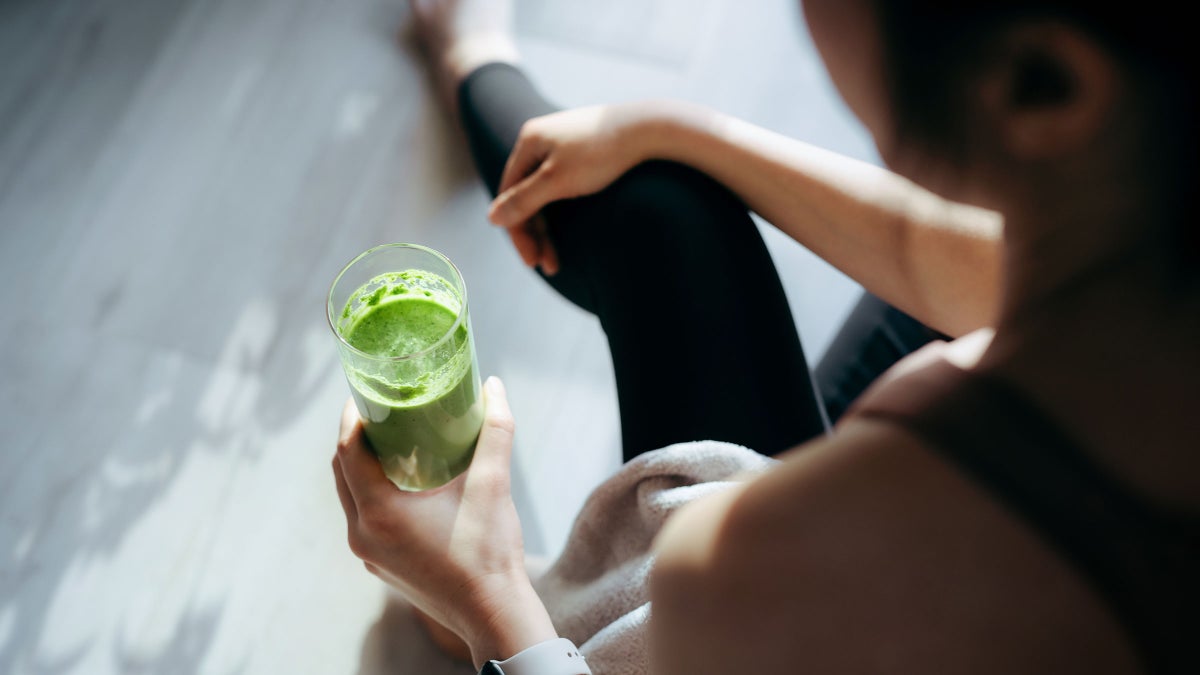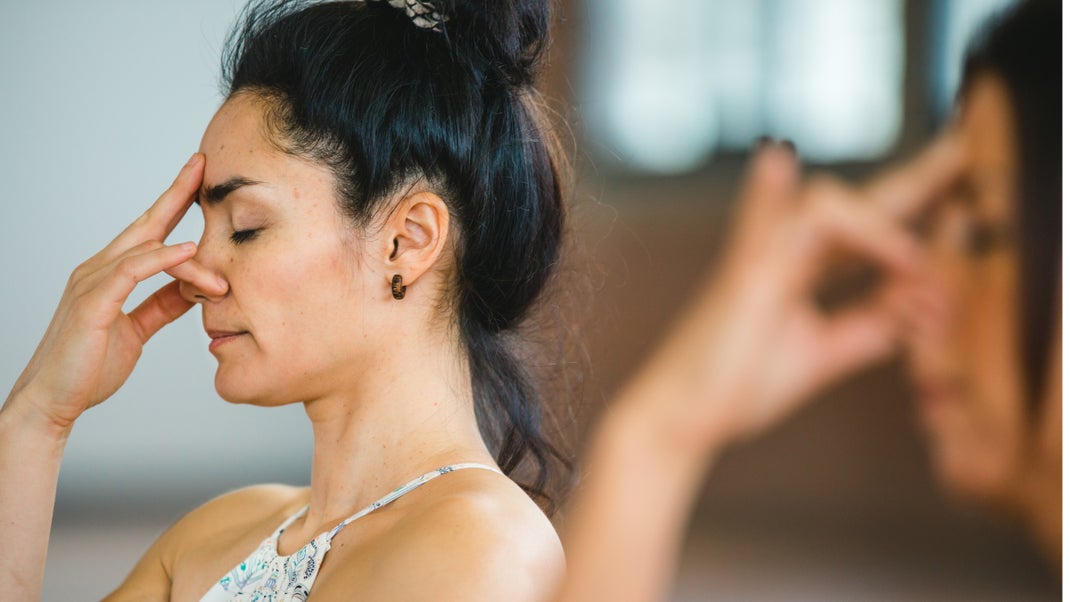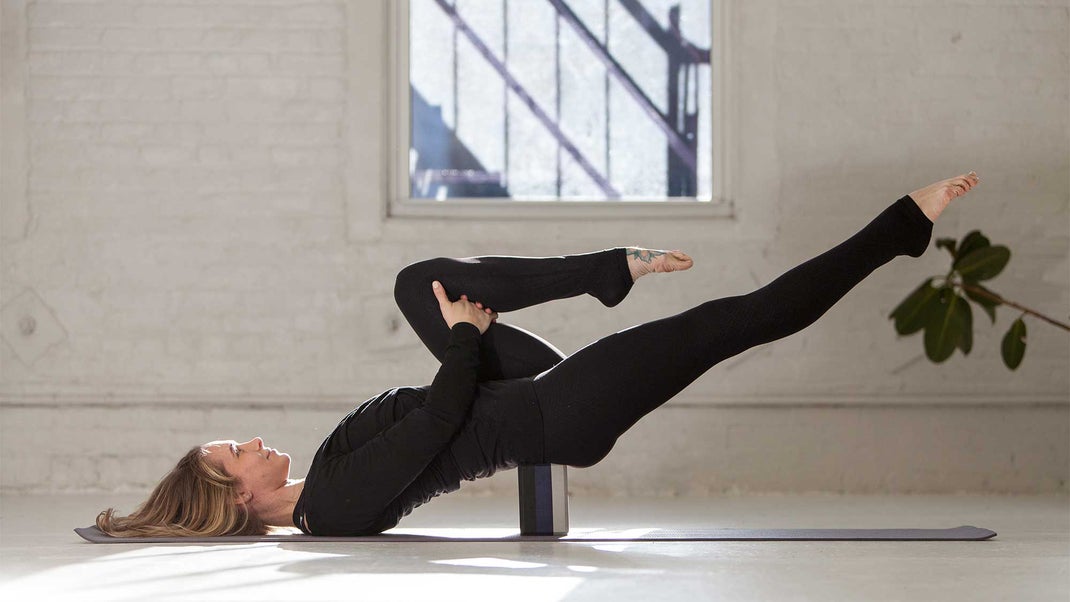Yoga is often thought of as a way to help you push your limits and see what you’re capable of. These poses will not only make you’re run more comfortable, but they’ll also help with recovery after a said workout. These are some of the best yoga poses for runners that I found on Instagram!
If you do yoga and run, you might think of the two as totally different activities. But yoga and running go hand-in-hand: The right poses to stretch and prepare your muscles for hitting the pavement or trail. So what’s the best yoga for runners? The kind you do right before—and after—you sweat.
Experts recommend stretching for at least 10 minutes before heading out on a run to properly prime your muscles. Here’s why: Overtaxing tight muscles can lead to soreness or injury, such as muscle strains or tears. And those injuries can potentially sideline you from running for weeks or (shudder) months.
If you feel a twinge or sharp bursting sensation when you set out on your run, take that as a sign that your muscles weren’t quite ready. But sometimes you don’t know you pushed yourself too hard until it’s too late.
So how do you reduce your chance of injury and stave off delayed-onset muscle soreness (DOMS) after your workout? Easy: Combine the latest research on stretching from the world of exercise physiology with the ancient practice of yoga.
The best yoga for runners includes both dynamic and static poses
Dynamic stretches—which move your joints through their full range of motion and lengthen your muscles and ligaments—are a warm-up for your entire body.
Static stretches, on the other hand, increase flexibility by taking your muscles to their maximum range of motion and remaining there. It’s why you may feel a burn in your hamstrings when sinking deeply into Uttanasana (Standing Forward Bend). (Remember: if a muscle feels a little too “hot” when sinking into a pose, it’s OK to back out of it a little.)
Experts recommend holding static stretches for a total of 60 seconds each, although it’s not necessary to hit that target in one go. Three rounds of 20 seconds in a pose is just as good for improving flexibility and range of motion. Patience is required, as static stretching won’t immediately release a stiff muscle, but consistently stretching in this manner will, in time, increase your range of motion.
Dynamic stretching before a run may make your legs feel ready to move and help prevent injury, while static stretching after a run reduces the accumulation of lactic acid in your body, sparing you from feeling sore the next day.
Yoga is a mixture of both dynamic and static stretches—flowing through poses provides the dynamic aspect while holding a posture offers the static element. That’s why yoga is a great complementary practice for runners.
Dynamic yoga for runners
Surya Namaskar A (Sun Salutation A), Variation
Why it’s great for runners: The Sun Salutation A sequence of poses engages your entire body and provides everything you need for a dynamic stretching session. Standing Forward Bend hits your hamstrings. Lunges stretch your quadriceps and hip flexors. Plank Pose and Cobra Pose work your shoulders. And Downward-Facing Dog Pose offers a full-body stretch that includes your oh-so-tight calves. Throughout this sequence, your spine flows through flexion (forward fold) and extension (backbend) to loosen up your back. Sun A will also get your blood pumping and increase your core temperature, readying your body for the distance ahead.
Try it: Begin at the front of your mat in Mountain Pose with your hands in prayer in front of your heart. On an inhalation, raise your arms overhead. On an exhalation, bend at your hips and fall forward into Uttanasana (Standing Forward Bend). On an inhalation, lift your chest to Ardha Uttanasana (Half Standing Forward Bend). On an exhalation, release your arms and chest down into Uttanasana. On an exhalation, step or jump back into Plank Pose.
On an exhalation, lower into Chaturanga Dandasana (Four-Limbed Staff Pose). On an inhalation, draw your chest forward into Upward-Facing Dog Pose. On an exhalation, press your hips up and back into Adho Mukha Svanasana (Downward-Facing Dog Pose). On an inhalation, lift your right leg back and up, and then step through to High Lunge. On an exhalation, step your right leg back to Downward-Facing Dog Pose, walk your feet to your hands, and return to Mountain. Repeat on the other side, lifting and lunging with the left leg.
Utkatasana (Chair Pose)
Why this yoga pose is great for runners: You may be familiar with Chair Pose as a static stretch, but repeatedly moving from squatting to standing to squatting again transforms this posture into a dynamic warm-up. Your upper back, shoulders, and core remain engaged as you swing your arms up and hold them there, while your glutes, quadriceps, hamstrings, and calves all fire to pull your hips down and propel you upward to standing again.
Try it: Stand at the front of your mat in Mountain. Inhale and reach your arms alongside your ears. Either keep your arms parallel to one another, palms facing inward, or press your palms together. Exhale and bend your knees, feeling activation in your calves, quads, hamstrings, and glutes. Keep your thighs parallel to each other. Stay for one breath, then on an inhalation, straighten your knees and swing your arms back down at your sides. Repeat 10 times.
Static poses for runners
Anjaneyasana (Low Lunge)
Why this yoga pose is great for runners: This posture provides a deep stretch for the hip flexors, adductors, glutes, and quadriceps. The stretch will mostly be felt in your extended leg, while the front leg in a bent position acts as the lever to control depth and intensity. Pain in this position can come from placing too much pressure on the kneecap, so rest the extended knee on a folded blanket or roll up your mat and place the knee on the folds to provide a cushion.

Try it: From Downward-Facing Dog (Adho Mukha Svanasana), exhale and step your right foot forward between your hands, aligning the right knee over your heel. Lower your left knee to the mat and slide your left knee back until you feel a comfortable stretch in the left front inner thigh and hip. Place the top of your left foot against the mat. Inhale and lift your chest upright.
As you do, sweep your arms out to the sides and up alongside your ears, palms facing one another or you can bring them to touch. Look straight ahead or tilt your head slightly back. Hold for 1 minute. Exhale and bring your chest back to your right thigh and your hands to the floor on either side of your front foot. On an exhale, tuck your back toes, lift your back knee off the floor, and step back to Downward-Facing Dog. Repeat with the left foot.
Virabhadrasana III (Warrior Pose III)
Why this yoga poses is great for runners: While Warrior Pose III is an excellent stretch for the hips and hamstrings, an unexpected benefit for runners comes by way of the ankle. Runners need ankle mobility for proper foot placement mid-stride, and to assist with injury prevention—tight ankles can redistribute pressure into the knees, hips, and lower back. Finding steadiness on one leg calls upon the ankle joint for support, increasing your range of motion while fending off wobbling and strengthening the ligaments and tendons of the foot and ankle to better prepare you for running on uneven surfaces.
Try it: Standing at the front of your mat, exhale and step your left foot back into a high lunge. Bring your chest forward to your right thigh and bring your hands together at your chest. Start to shift your weight forward into your front foot and lift your left foot and then start to straighten your front leg as you lift the back leg parallel to the mat. Keep your gaze down and slightly forward. If you want more of a shoulder stretch, slowly reach your arms forward, parallel to the floor and parallel to each other, palms facing each other.
Your arms, torso, and raised leg should be positioned relatively parallel to the floor. Push through your back heel and extend it strongly toward the wall behind you and, if your arms are extended, reach just as actively toward the wall in front of you. Stay for several breaths. On an exhale, slowly come out of the pose the same way you came in. Bring your hands to the floor on either side of the right foot, and on an exhalation, step your left foot forward to meet your right. Stay in this forward bend for a few breaths, then repeat on the other side.
Malasana (Garland Pose)
Why this yoga pose is great for runners: We all know we should be squatting for strength training, but did you know that it’s also a useful position for recovery? That’s right, gently holding Malasana (the version with your feet apart) releases tension in your hips, groin, and low back while improving ankle mobility. Rocking from side to side in this position can improve ankle dorsiflexion while increasing the stretch in your inner thighs. (If you have low back or knee injuries, though, rocking may aggravate it and should be avoided.)

Try it: Squat with your feet about hip distance apart and your feet angled out at least 45 degrees. If you can, keep your heels on the floor; otherwise, roll or fold the back of your mat or a blanket and slide that under your heels. Bring your thighs slightly wider than your chest. Exhale and lean your chest slightly forward and fit it between your thighs. Bring your palms together at your chest in prayer hands and press your elbows against your inner thighs while resisting that by pushing your knees into your elbows. Lengthen your core by lifting your chest away from your hips. Remain for 30 seconds to 1 minute. To come out, inhale, straighten your knees, and stand.
Adho Mukha Svanasana (Downward-Facing Dog Pose)
Why this yoga pose is great for runners: Full-body stretches are your friends before and after a run. While most runners focus on their legs—and this pose offers a deep stretch throughout the calves, hamstrings, and glutes—it also loosens up the entire back and shoulders, which are activated during a run, too. Pumping your arms can lead to a stiff upper back, while your lower back absorbs some shock from every step.
Try it: Start on your hands and knees with your hands about 3 inches ahead of your shoulders and shoulder distance apart. Press down firmly through your knuckles. Inhale and tuck your toes under; exhale and press your hips back and up, bringing your legs toward straight although you can keep a slight bend if you need. Glance back at your feet to make sure they’re hip-width apart. Let your head hang freely so there’s no tension in your neck and keep your gaze at your thighs or your navel. Draw your shoulders away from your ears and toward your hips to create spaciousness at the base of your neck. Maintain a smooth and steady breath. Remain here for anywhere from a few breaths to a minute.
Toes Pose
Why this yoga pose is great for runners: Your feet and shins undergo tremendous stress with each pounding step you take. Stretching your toes and the soles of your feet can reduce the occurrence of plantar fasciitis, which in turn ensures your runs remain bearable. This pose also stretches the muscles and connective tissues along the tibia to help prevent and reduce the pain of shin splints. Warning: This stretch is not-so-affectionately known as “Toe Breaker Pose.”
Try it: Kneel on the floor with your toes tucked under. If needed, use your hands to tuck all your toes under. Slowly shift your hips back so your butt rests on your heels and you feel a good stretch in your toes. Remain here for 30 seconds to 2 minutes.
Viparita Karani (Legs-Up-the-Wall Pose)
Why this yoga pose is great for runners: This pose re-balances the body and reduces swelling in the feet by bringing blood flow back to your head and chest and away from your lower extremities, which received more and more blood flow with every pounding step.
Try it: You may want to reach for a bolster, a few folded blankets, or a few pillows to take pressure off of your lower back. Once you have your support, start with it about 5 to 6 inches away from the wall. Sit sideways on the right end of the support, with your right side against the wall (left-handers can substitute “left” for “right” in these instructions). Exhale and, with one smooth movement, swing your legs up onto the wall and ease your shoulders, and head onto the mat. (This isn’t a graceful act.
It does, however, get easier with practice.) Your glutes should be a few inches away from the wall. Lift and release the back of your head away from the back of your neck and soften your throat. Draw your shoulder blades away from your spine and release your hands and arms alongside your body or straight out from your shoulders, palms up. Let your legs relax against the wall and keep them just active enough to hold them in place. Relax your core and shoulders. Stay in this pose anywhere from 5 to 15 minutes. To come out, bend your knees and push your feet against the wall to lift your low back off the support. Then slide the support to one side, lower your pelvis to the floor, and turn to the side.
Conclusion:
These Yoga Poses Will Help You Have Your Best Run—And Recovery—Ever These poses are great for runners because they help with muscle tightness and relieve stress.
Your feet will feel amazing after you stretch them out! Toe Pose and Viparita Karani (Legs-Up-the-Wall Pose) are both good yoga poses to try if you want to reduce foot swelling or increase flexibility in your legs.
These exercises can also prevent plantar fasciitis, which is inflammation of the band of tissue that runs along the bottom of your foot, as well as shin splints.
Stay healthy by doing these stretches before a run or at any point during your day when it feels like there is too much tension in your neck and shoulders. These poses will help you have the best run and recovery ever!




